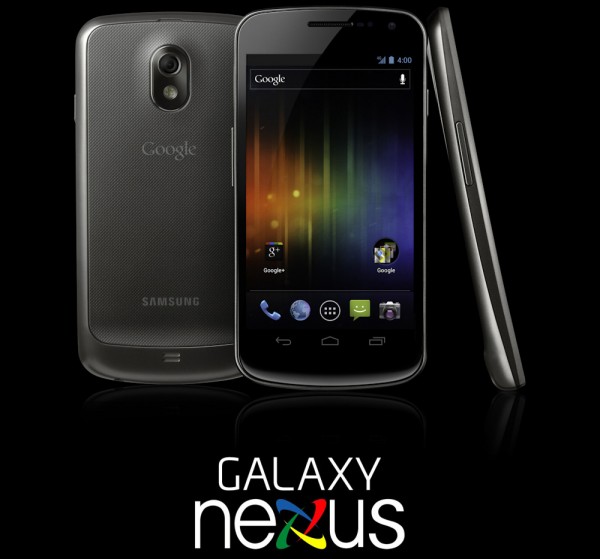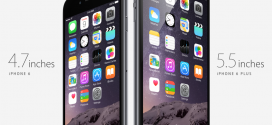Posted By Donny Torrefranca:
Since Google first announced the first of its Nexus line in the Nexus One by HTC, in January 2010. The name Nexus has been the Holy Grail of smartphones for Android fans. Since then there have been two follow ups to the original Nexus, and both are manufactured by Samsung, the Nexus S, and now the Galaxy Nexus. Does the Galaxy Nexus live up to the hype of being the Number 1 Smartphone of the Year? Is it all that it is hyped up to be?

Let me introduce you to the Samsung Galaxy Nexus, the 3rd rendition of the Google-branded Nexus line-up, and the 2nd go-around for Samsung.
httpvh://www.youtube.com/watch?v=-F_ke3rxopc&hd=1
Impressed with the new features yet?
As with all other Nexus line, it is the introductory handset pre-installed with the latest major Android update, Android version 4.0, codename Ice Cream Sandwich. Unlike the previous version, Honeycomb, which is specifically for Android Tablets. Ice Cream Sandwich is Google’s attempt to integrate the Operating System for both Tablets and Smartphones. It is well built, with lots of new features and animations that will make it a pleasure to interact with on Tablets and Smartphones alike. But the operating system is nothing without a capable hardware to run it.
Samsung has had the bragging rights to having the slimmest smartphone since it released the Galaxy S II, and the Galaxy Nexus is not to be excused from this. Although it is not as slim as the GSII (8.5mm), it comes in a decent 135.5 x 67.9 x 8.9mm at its slimmest, and weighing in at a respectable 135 g. While some may argue that the GSII was a bit too light at 116 g, the extra weight over the months is a nice weight gain. We’re not talking about fat gain, the Nexus gained its weight in muscle mass. The screen is now 4.65 inches, with 720 x 1280 pixels (~316 ppi pixel density), and Super Amoled HD. Not quite there with the iPhone 4’s retina display which is at 326 PPI, but Super Amoled display alone offers better colour contrast and provides sharper and colourful images. In my honest opinion.
The phone itself is very well designed. The teardrop style means the phone is thinner up top and bulges out a bit at the bottom. Complimented by the Nexus S-style curved glass for a natural feel when the phone is up to your ear. It has nicely rounded edges all around which makes it very comfortable to hold for extended periods. The change from the smooth and somewhat slippery battery cover of the Galaxy S II, the textured battery cover of the Galaxy Nexus makes it more secure in your hand. The power button is in its usual spot on the right side of the device, while the volume rocker is on the left. While to volume rocker is adjusted slightly to be more closer to the mid section of the phone, I find it to be in a more convenient spot now. It definitely shows that a lot of thought has been put in to the design of the Galaxy Nexus, which makes me wonder….why did they place the micro USB slot and the 3.5 mm headphone jack at the bottom of the device. This leaves the top portion of the phone empty. It is not a common spot for most smartphones nowadays, but if you really think about it, how often do you have both micro USB and the earphones plugged in at the same time???
So enough about the boring, geeky stuff that only techno geeks like me are interested in. But for those of you who ARE techno-geeks, see this link courtesy of GSMArena for more specs and numbers that comes along with the device.
Now that that’s out of the way, lets talk fun stuff…
For fans of the Nexus line like me, we look forward to the latest rendition of the ones they call “Google Phone”. It was after all, the original Nexus One that officially converted me from an iPhone fan boy (yes I admit it), to an Android-geek. As I stated above, the Nexus line is the Holy Grail for Android devices. It usually offers the best Hardware and Software available to Android. The Nexus One offered the first 1Ghz processor, the Nexus S offered the 1st NFC-capable, Super AMOLED display, and the Galaxy Nexus is the first to offer Face-unlock, Android Beam, and the complete integration of Google+. Other noteable offerings that I will highlight for you is in the camera. The zero-lag shutter allows you to literally click away, and the shutter is ready for the next shot in half a second. Also, the native capability of the camera to take panoramic shots in one single motion is smooth as butter. Just point, click once, and glide the camera along without worrying about matching up to the previous shot. The phone does all the stitching for you.
The face unlock feature is very accurate too. So accurate in fact that it can be tricked by using a photo of the the phone’s owner. While this may seem like a security issue (and it really is), this feature is more of a fun and interesting way to quickly unlock your phone. It is not meant to replace your normal pin code. The whole time I’m using the phone, not once did the phone unlock to another person’s face. I was surprised in its ability to recognize me even in low lighting conditions.
Android Beam is a beefed up version of the previous NFC offering. While the previous NFC was limited to what you can share, Android Beam allows two NFC-capable device to quickly share websites, contacts, apps, etc… just by touching the 2 devices together and clicking on the screen. While the technology is still fairly new and not in the mainstream yet, I can see this capability coming in very handy in the near future.
Similarly, the integration of Google+ on this device allows you to quickly upload photos to your Google+ profile. A perfect add-on for socialites who doesn’t mind sharing anything, and everything on the internet. (yikes)
Since we’re also talking about Android 4.0 when we discuss the Galaxy Nexus, there’s one thing I should mention, that smartphone users might find odd with Ice Cream Sandwich. While we want things to be quick and snappy when we interact with our devices, I found ICS to be somewhat… ‘lagged’ when I first played with it. I tried to avoid using the word “laggy” because that’s such a negative word when referring to any smartphone OS. Believe me, I would’ve used it… but up until a few hours into playing with the new OS, I kinda liked it. There’s something about the smoothness of the transition, and the slight ‘delay’ that it added when switching from screen to screen. It’s very hard for me to describe it, but I think Google just found the perfect “in-between” with ICS. Even as I switch from interacting with the Galaxy Nexus to my iMac while I write this review, it even made my iMac feel that much smoother. (if that’s even possible). So there you have it… the very first compliment between Android and an iDevice.
The Galaxy Nexus is set to be released officially by Bell and Virgin mobile in Canada on December 8th with a 3yr contract price of $159.95. But some Bell, Virgin, and Best Buy locations are releasing them a day in advance. Mark it down, December 7th at 1PM.

 Tek Tok Canada Canadian Technology News & Reviews
Tek Tok Canada Canadian Technology News & Reviews

was wondering how much the price will be?
starting at $159.95 on a three year term
$649.99 outright (must have a Bell account)